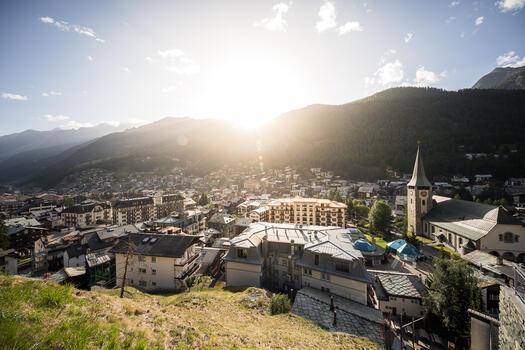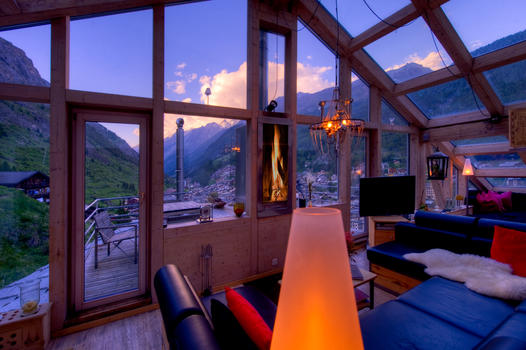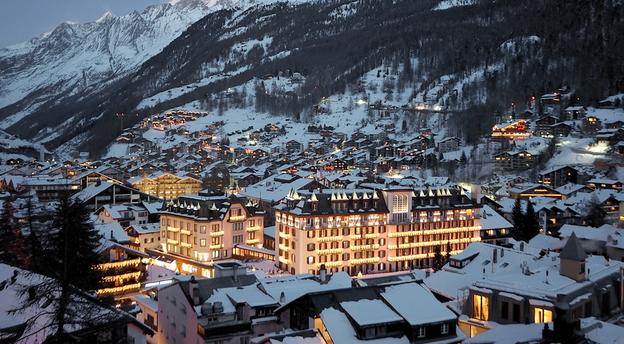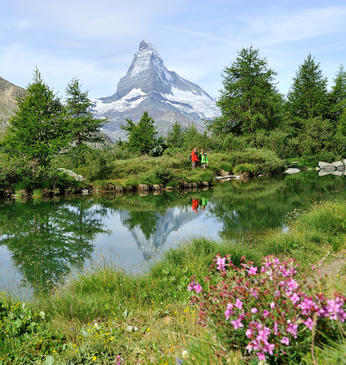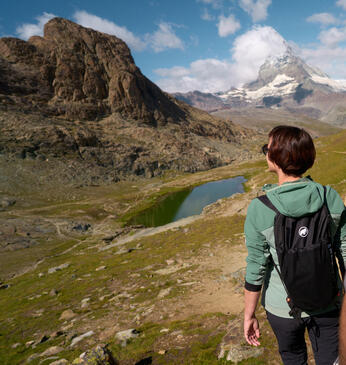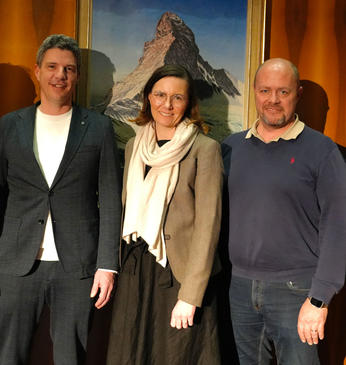Edelweiss, gentian and alpine rose – these are the stars and the best known alpine flowers. But there are also real rarities in Zermatt: snow wormwood, dwarf rampion, sweet clover, umbel pennycress. They are unique – so specialists call them ‘endemites’. They are plants that only occur in a defined and clearly limited spatial environment. Zermatt has at least seven such ‘endemites’.
But what does one need to discover these rare flowers? Certainly some specialised knowledge, both of flowers and geological conditions. For instance, edelweiss enjoys chalky soil, while arnica sprouts rather in silica, acid soils.
One needs: good footwear, possibly a field guide or the smartphone app of the standard work ‘‘Flora Helvetica“, as well as a magnifying glass – because this enables you to get a closer look at the small barbs on the heads of the sepals of the dwarf rampion. Zermatt’s hotspot for observing flowers: the Rotenboden-Gornergrat hiking trail over the lateral moraine of the Gorner glacier. This offers the greatest variety of rare flowers in the smallest space. There’s a passage on the trail that requires surefootedness and freedom from dizziness.
Sensitive ecosystems
The southern slope of the Gornergrat is a very sensitive ecosystem, so hikers are asked not to stray from the trails. Even entering the areas can damage the extremely vulnerable plants. An alpine meadow at this altitude needs hundreds of years to develop and stabilise.
Depending on the season – the Gornergrat trail is accessible from June – you can find, in addition to edelweiss: dwarf rampion, alpine aster, alpine alyssum, umbel pennycress, glacier wormwood, Hallers pasqueflower and Hallers ragwort, Schleichers gentian and the fine-haired sweet clover.
Accessing flowers comfortably
Those who prefer to avoid excessive hiking efforts can comfortably follow a descriptive trail, such as the Blumenweg (flower path) (see link below) at Sunnegga. Here depending on the season the grass glows with alpine anemones, gentians or violet pasqueflowers. Those wishing to walk in solitary nature follow the Botanical Educational Trail leading in the direction of Trift (see link). Here one can find edelweiss and various types of orchid. Along both trails information boards explain the interplay and characteristics of nature and plants.
Unique environmental conditions
A wide range of components contribute to the biodiversity of Zermatt’s flora. So seven endemic plants grow in Zermatt: snow wormwood, dwarf rampion, sweet clover, umbel pennycress, Hallers ragwort, fringed sedge and hairy stichwort.
- 39 mountains over 4000 metres protect Zermatt on three sides, so the climate is very dry.
- Zermatt features the highest forest line in the Alps. It lies between 2400 and 2500 metres.
- Some parts of the Zermatt mountains rose out of the Arctic Sea during the last ice age, meaning that some plants originate from that age – for example the dwarf rampion.
- Nowhere else in the Alps can one find such a variety of rocks. Four geological zones come together with different chemical compositions.
- 75 per cent of the municipal territory consists of nature reserves of national and internationals significance. The vegetation areas cover a total of 6.2 square kms.
Botanischer Lehrpfad (Botanical Educational Trail)
Zermatt – Trift: 3.5 km, 2.10h, 734 m altitude differential, accessible from July to September. The local world of flowers is explained on the boards along the trail. To see: numerous orchids, for example Knabenkraut orchid (May-June), edelweiss, alpine aster, and rare grasses. Those whose eyes are not trained for the inconspicuous edelweiss should stop after the alpine aster lookout. This lives in the same areas as the edelweiss (July to mid-August). See link below.
Edelweissweg (Edelweiss trail)
Zermatt – Alterhaupt (Pension Edelweiss) – Trift – Höhbalmen – Zmutt – Zermatt. 18.8 km, 7.30h, 1047 m altitude differential, accessible June to October. For demanding hikers, spectacular view on the Matterhorn north face and the Monte Rosa massif. As the name implies, here edelweiss abound, and in the Trifttal one practically comes face to face with them. See link below.
Blumenweg (flower trail)
Blauherd – Tuftern – Sunnegga. 4.3 km, 1.20h, 363 m altitude differential, accessible June to September. Theme boards. See link below.
Guided walks
Those interested in botany can join hikes led by an experienced botanist. These take place in July and August 2013 every Wednesday. Minimum number of participants: 8.
Full-day excursions (6 hours, cost per person CHF 70, reduction for children). Dates: 3.7., 17.7., 31.7., 14.8., 21.8.2013. Half-day excursions (3 hours, cost per person CHF 40, reduction for children). Dates: 10.7., 24.7., 7.8.
Inscription: Zermatt Tourism, until 5.30 pm on the previous day or by telephone: 027 966 81 00
Literature/Images:
- “Die Reichtümer der Natur im Wallis – Die Pflanzenwelt von Zermatt“, Christoph Käsermann/Fabian Meyer / Arnold Steiner. From the collection: Environment Department of the Canton of Valais, 2003, Rotten Verlag Visp.
- „Flora Helvetica“, Konrad Lauber, Gerhart Wagner, Haupt Verlag Bern
- “Die Reichtümer der Natur im Wallis – Seltene Blumen des Wallis“, Egidio Anchisi. From the collection: Environment Department of the Canton of Valais.
- Illustrations: Copyright Konrad Lauber, Haupt Verlag Bern.
- The article has been written in friendly cooperation with Olivier Putallaz, biologist, of the office Büro buweg, Visp.
